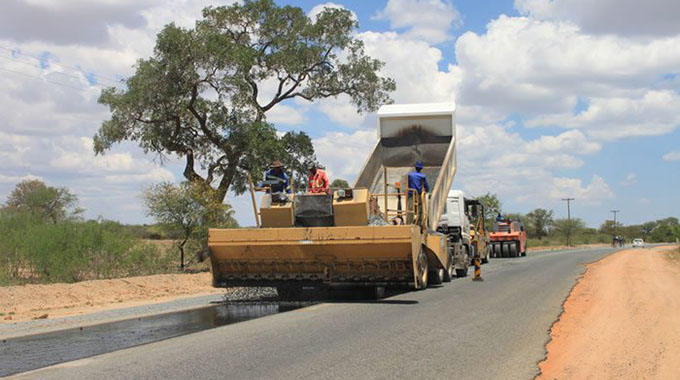Split Environment, Water and Climate ministry OK for now

Jeffrey Gogo Climate Story
President Mnangagwa has split the Environment, Water and Climate Cabinet portfolio.
He shuffled the Water and Climate files into the enlarged Lands, Agriculture, Water, Climate and Rural Resettlement Ministry.
Environment retraced its footprints back to its roots in the Tourism and Hospitality portfolio, according to the latest Government ministerial assignments.
But could the changes impede policy direction and progress towards achieving Zimbabwe’s climate change goals, that some feel were best served under a consolidated, eco-specific Government Ministry as in the past?
Not necessarily. A bit of background will suffice.
Climate featured for the first time in a Cabinet portfolio in 2013. Ex-president Robert Mugabe added it to Environment and Water.
There was growing recognition within Government at the time that challenges emanating from climate change, manifesting in the form of repeated droughts, tropical cyclones, floods, and reduced rainfall, needed to be dealt with directly under a specific Cabinet file.
Before that Climate was dealt with as an ad-hoc department within the Environment file.
Environment itself wasn’t a stand-alone portfolio in the past. It was joined together with Tourism and Natural Resources Management, and then Hospitality.
This is not the first time for the Environment, Water and Climate Ministry to be split, however.
Mr Mugabe ruptured the portfolio towards the end of his reign last year for political gain, before the incumbent President quickly patched it up to its 2013 factory settings.
President Mnangagwa is going leaner as part of efforts to cut public spending on ministerial assignments, and to narrow Government business for more effective, efficient management.
Most of the portfolios that swallow the disbanded Ministry share a lot in common in that they are predominantly centred on the naturally occurring aspects of Zimbabwe’s rich and diverse socio-economic fabric.
So, it has always appealed to the appointing authorities to merge Environment, Water or Climate with one of a several affiliated Government line ministries.
One disadvantage of a set-up like this is that some portfolios risk being overlooked, while others flourish. A much leaner portfolio is thought to improve efficiency, management and effective policy implementation.
It looks like by disintegrating the Environment, Water and Climate Ministry and fixing certain files into already seemingly congested Cabinet Portfolios President Mnangagwa is setting up climate change for failure.
But that’s not altogether accurate. Indeed, the new amalgamated Ministry of Lands, Agriculture, Water, Climate and Rural Resettlement is a very huge portfolio.
It is so big that the President has had to assign two deputy ministers to help Minister Shiri, a retired Air-force of Zimbabwe general, to run the Cabinet file.
However, Climate and Water in Lands, Agriculture and Rural Settlement are swimming into an almost natural zone, given the linkages that exist between the different sectors.
And so is Environment in Tourism.
In agriculture, for example, if Government follows through on its 2017 Budget promise to build more dams and refurbish old irrigation equipment, that would dovetail with the wider economic goals on tackling climate hazards. Water and irrigation access are seen as major interventions in climate change adaptation.
The new administration of President Mnangagwa has also demonstrated some signs of alertness to the environmental and climate change problem.
Until last year, the environment and climate portfolio had suffered some of the deepest cuts in budgetary allocations. As a percentage of total Government expenditure, spending for the portfolio has consistently declined, falling to one percent in 2017 from 2,5 percent in 2012.
But President Mnangagwa doubled public spending for the sector to about $85 million since he came to power in November.
So, in that sense, the increased spending is particularly encouraging.
It potentially reflects the direction that Zimbabwe, under President Mnangagwa, is likely to follow in the wide-ranging issues concerning environment — a path of change, as well as rapid implementation of programmes that help people cope with climate change, arguably one of the greatest threats faced by mankind today.
His predecessor, Mr Mugabe, had already laid a solid foundation for this change to happen. Though Mr Mugabe didn’t go far enough on execution, his administration signed Zimbabwe onto important global eco-related treaties, and at home crafting one of the most comprehensive legal frameworks on environment anywhere on the African continent.
In light of the foregoing — and more that have not been captured in this article — the disintegration of the old Environment, Water and Climate Ministry may not be a totally bad idea after all, even though the preferred option is to have consolidated the three portfolios under one Ministry.
What this means is that Government ministries will have to work much more closely and harder together than before, to achieve (read implement) Zimbabwe’s competing, cross-cutting climate goals, both on the domestic and global fronts. Much of the work on policy direction has already be done under Washington Zhakata’s leadership in the Climate Change Department.
The Climate Change Department, headed by Zhakata in the old Environment, Water and Climate Ministry, was born around 2013 with the inclusion of ‘Climate’ in a Government Ministry – or it was reinforced to tackle specific climate issues, which in nature over-ach to include aspects of Environment and Water — and everything else along the economic and social chain.
God is faithful.











Comments